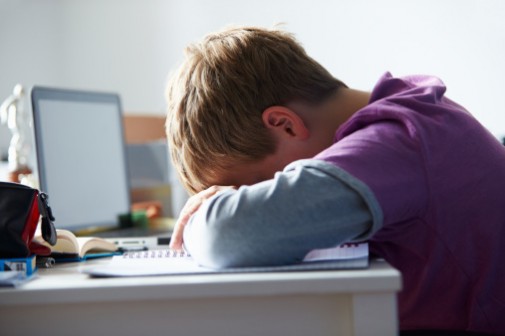Teens more vulnerable to web danger than they think
With more than 42 percent of teens experiencing some form of cyberbullying, according to the i-Safe Foundation, results from a new survey may not be so surprising.
The survey, to be published in the International Journal of Social Media and Interactive Learning Environments, finds that the majority of kids who have been bullied over the Internet in some way don’t understand just how unsafe the web can be. They also found that most parents had no idea about the extent of online bullying.
More than 4,200 middle school and high school aged students were surveyed about their familiarity with the risks, appropriateness and their own behaviors on the web and social media sites.
Researchers, from the Johnson & Wales University, in Providence, RI, said they found that one in three of those surveyed said they had been cyberbullied while in school. They also discovered that most students had little or no awareness of safety concerns while surfing the web.
One third of the middle school group said their parents monitor their activity and only 17 percent of high school students have their Internet usage monitored.
Researchers hope this survey will not only bring awareness to bullying in person, but put more emphasis on the digital dangers. They also want kids and teens to be more aware of their activities and to understand their own vulnerability.
“The need to monitor children’s behaviors has become increasingly difficult with the extension of the internet and cell phones. No longer are children safe and sound in their home or school. In fact, the threats found on the Internet may be more dangerous and threatening since there are often no barriers,” researchers said in a statement.
Dr. Chris Jamerson, pediatrician at Advocate Children’s Hospital in Park Ridge, Ill., offers the following four ways for parents to ensure their kids stay safe and prevent potential bullying situations while surfing the web:
Limit screen time. No more than two hours of screen time per day should be allowed. Kids on the Internet longer than two hours can lead to trouble. They start to run out of things to do which can lead to landing on sites they should not be on or talking to strangers on social media sites.
Set guidelines. Talk to your kids and set guidelines so they know what they can and cannot do online. This should be done with an explanation of why talking to strangers online or visiting certain sites is not allowed so that kids are able to see the risks. Parents should stress the importance of never providing names, addresses, age, school location, phone numbers or passwords to someone over the Internet.
Have a conversation. Engage in a conversation with your kids when they are offline. Talk about what they did, what websites they visited and what information they were looking for. By having these conversations regularly it is easier for parents to know what their kids are doing online and it also opens the door for kids to tell them if something happened on the Internet that made them feel uncomfortable.
Check their usage. Newer devices have built in tracking devices where parents can go back and look at all the sites their kids have visited. These products allow parents to make sure their child is not visiting sites that you as a parent do not approve of. Parental controls can also be set up to block certain sites that may have inappropriate content.


















